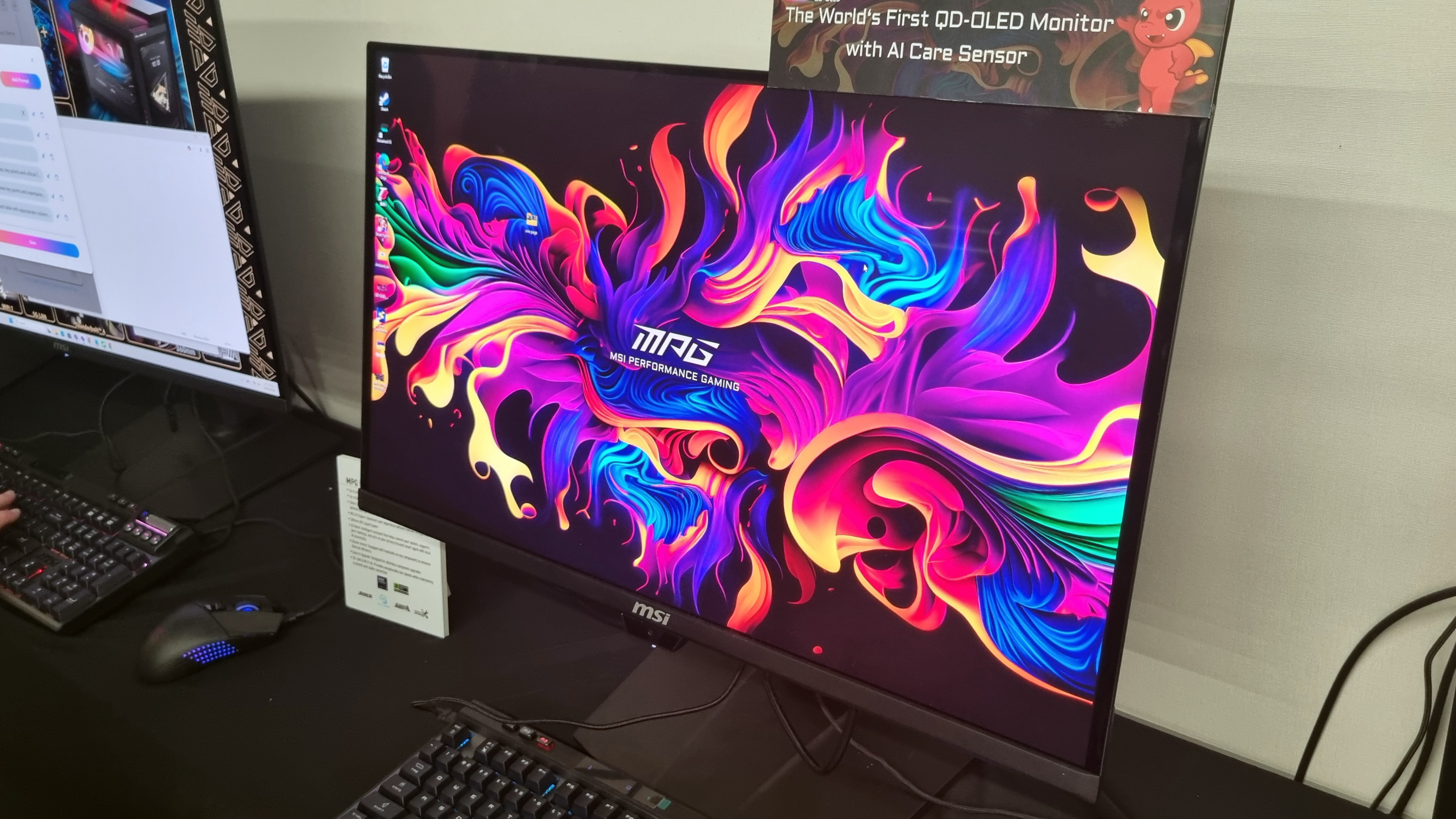
Samsung Galaxy Buds 3 Pro Review
The Apple AirPods are one of the most iconic and popular pairs of true wireless earbuds you can buy. But, since they’re designed exclusively for Apple devices, Android users are left in the cold. Samsung has been making great alternatives for years, but with the Samsung Galaxy Buds 3 Pro, they’re closer to the Apple formula than ever. While there’s a little bit of copycat-ism going on, and they could do with better battery life, great sound quality and active noise cancellation make these a contender for one of the best wireless earbuds of 2024.
Samsung Galaxy Buds 3 Pro – Design and Features
The Galaxy Buds Pro has undergone a reinvention from last generation. Samsung has abandoned its previous in-ear design for the Buds 3 Pro and instead opted for AirPods-like stems. Also like the AirPods, it comes in two versions. The standard Galaxy Buds 3 open-ear design and hangs in your ear, allowing you to hear what’s around you. The Galaxy Buds 3 Pro offers an in-ear fit with silicone ear tips and added features. The extra money nets you Adaptive Noise Control and an additional driver for enhanced sound quality.
The similarities to the Apple AirPods Pro are unmistakable, though Samsung has made a few changes to set itself apart. For starters, you can pick them up in either white or silver. The stems also eschew the rounded shape and instead have angular faces to accommodate the buds’ pinch and touch controls. There are white light strips on the back of each bud that can illuminate or pulse. Or you can turn them off if you don’t want people looking at your glowing ears.
The case has also been reworked and is much closer to the AirPods’ in shape and size. The lid is transparent to give you a peek inside and play into the buds’ futuristic design. The material is glossy and slippery to hold, though, and I worry about it getting scratched up if there’s anything like keys or coins in my pocket at the same time.
The earbuds use a mix of pinch, pinch-and-hold, and capacitive touch for control. Pinching the stem once will play and pause music, while double and triple-pinches are used to navigate tracks. Holding a pinch swaps sound modes (ANC and Ambient/Transparency), and sliding your finger up or down the stem controls volume. The flat faces on the stems make pinching and sliding in the right place easy, and having two means of controls gives you full access to all of your controls on either earbud.
Internally, the Buds 3 Pro uses a fresh dual speaker system to create their impressive sound. It’s composed of a 10.5mm dynamic driver and a 6.1mm planar magnetic driver. This is particularly exciting as planar drivers are well-known for their exceptional clarity and detail and are more often found on bulky audiophile headphones instead of true wireless earbuds.
Leaning further into their audiophile angling, each driver has its own digital to analog converter (DAC), a small processor that converts digital sound into something those little speakers can understand. DACs aren’t all created equal and rarely is each driver assigned its own chip.
Higher quality DACs means higher quality sound. The buds can output impressively high-res audio: 24-bit/96kHz and up to 512kbps, well in excess of traditional Bluetooth. It’s even more than leading high-res Bluetooth codecs aptX HD and aptX Adaptive. The catch is, this is only possible with Samsung’s proprietary SSC codec, so you’ll need a Galaxy device to use it. AAC and SBC are supported on other devices, and the buds still sound good using them, but this is the wrong lesson to take from Apple, Samsung.
The lack of LDAC or any version of aptX is also disappointing. Both have been supported natively on Android devices since Android 8.0, so this just feels like pressure to buy further into the Samsung ecosystem.
Active Noise Cancellation has been improved from the Galaxy Buds 2 Pro. The new silicone tips do a good job at isolating you from your surroundings, but the new ANC algorithm takes things up a notch… depending on what you’re looking for. Unlike older ANC headphones that focused on low frequency noise, like jet engines, the Buds 3 Pro emphasizes middle and high-frequency cancellation, the kind of sounds you’ll find at an office or at school. They completely blocked out the sound of the fans in my office and impressively quieted down voices from the other room. They’re still good for travel, but they’re now a better fit for situations outside of your commute.
There is improvement to be found with battery life, but it’s not as much as you would expect. Compared to last-gen’s Buds 2 Pro, you get an extra hour of listening time with ANC on. They’re rated for six hours of playback with the charging case expanding that to 26 hours. Turning ANC off increases that to seven hours and 30 with the case. It’s about the same as the Bose QuietComfort Ultra Earbuds, AirPods Pro, and the recently released Bowers & Wilkins Pi8, but the Sony WF-1000XM5 is still the go-to choice with its all-day eight hour battery.
The buds are feature-rich and even take advantage of some of Samsung’s AI features on its latest Galaxy devices. Inside the Samsung Wearables app, which isn’t exclusive to a particular device, you can choose from different EQ presets or create your own with a nine-band equalizer. Spatial Audio is back, as is the Find My Earbuds feature that shows you their last known location on a map. There’s an experimental Game Mode which reduces latency for mobile gaming, and additional options voice control, in-ear detection, and configuring some of its controls.
AI features are limited but neat. Adaptive Noise Control uses the buds’ microphones to listen to your surroundings and adjusts ANC and ambient sound to match. It can also detect sirens and voices to pipe them through and keep you aware of your surroundings. If you have a Galaxy phone from the last couple years, you can also make use of its Interpreter mode to translate a foreign language in real time. Technically, you don’t need the Buds 3 Pro to do this, but with them you can enable a Listening Mode so you don’t have to tap your phone as you go back and forth in conversation.
Purchasing Guide
The Samsung Galaxy Buds 3 and Buds 3 Pro can be purchased from Amazon, Best Buy, or directly from Samsung. The Galaxy Buds 3 retail for $179.99 and the Galaxy Buds 3 Pro for $249.99. They are available in either white or silver.
Samsung Galaxy Buds 3 Pro – Sound and Performance
The Galaxy Buds 3 Pro have been criticized for looking too similar to the Apple’s AirPods, but the move to a bud-and-stem design has done wonders for their comfort. I’ve worn the earbuds completely through their battery more than once without ever feeling discomfort or like they were coming loose in my ears. Their shape and silicone tips do a great job of locking them in place for extended listening sessions, even during intense workouts.
LDAC or no LDAC, they sound great. They come set to the Balanced preset by default and have a warm sound with a wide low-end and plenty of detail in the mids and highs. Kick drums have an articulate pound and sense of impact while bass layers thickly on top. Midrange instruments and vocals come through with impressive clarity and natural timbre. As a guitarist, I’m keenly aware of how they come across in different headphones, and the Buds 3 Pro did a good job of capturing the detail of gritty rhythm in metal and the edge of driving lead lines, all while never sounding sharp. Acoustic music is just as good, and if you’re into hip-hop or pop, you’ll find a lot to love throughout the mix.
The technicalities are also very good. The soundstage is surprisingly wide and presents a nice sense of space even without spatial audio turned on. Instruments and audio cues are well-layered, so you can hear every small piece of what’s happening in your music and games. It’s a cliche to say you’ll hear things you’ve never heard before, but depending on what you’re coming from, you just might.
For gaming, they work well, but you’ll want to enable Game Mode to avoid the usual Bluetooth latency. It trades range for its faster response, but it’s worth it (and probably doesn’t matter since you’ll most likely be holding your phone the entire time anyway). I was able to play Call of Duty Mobile without noticeable delay, which isn’t something I can say about even most flagship true wireless earbuds.
How you personally experience these earbuds depends on the EQ preset you choose and whether you have ANC enabled. Each has a different character but distortion is never a problem. There’s the usual Bass and Treble Boost, as well as a few others, but I had the best results dialing in my own settings. With a bit less sub-bass and more treble, I was genuinely surprised at how much clarity they were able to deliver.
Using ANC makes a noticeable impact on the sound. Bass sounds a little softer with it turned on and there’s an artificial spaciousness to the sound that reduces its clarity slightly. The changes aren’t major but they’re audible, so I recommend setting your EQ in whatever mode you’ll be listening in the most.
The active noise cancellation is very good. I don’t fly or take the bus regularly, but I do need quiet to focus when writing and these earbuds have worked wonderfully. Their emphasis on middle and high frequencies allows them to be a bit more versatile and effective in different environments. The Sony WF-1000XM5 and Bose QuietComfort earbuds cancel out more overall, but the Buds 3 Pro are especially effective for everyday use when you’re not traveling.
Ambient Sound Mode is very clear. You won’t have any issue hearing your surroundings, though Apple sounds more natural. The Buds 3 Pro have a crispness that can sound a bit sharp at times.
Adaptive Noise Control was hit or miss. It supposedly uses AI to adjust its noise cancellation, but it sometimes didn’t seem to know how to handle constant droning sounds, like the fans in my office. The ANC would pulse up and down in an uncomfortable way, forcing me to turn it off. Other sounds, like running water, it passed right through like it was someone trying to talk to me. It works sometimes, until it doesn’t, which made this a mode I mostly avoided.
Microphone quality is crisp and clear and did well isolating my voice from my surroundings. In test recordings, I was able to clearly hear what was being said even with loud noise being played from my PC’s speakers. It had a harder time with strong wind and caused my voice to break up a little more, but short of taking a call in dire weather, your caller will be able to hear you just fine.
My biggest problem was battery life and some weird notifications from the Find My Earbud feature. I don’t listen especially loud, usually about 70%, but with ANC on I only averaged about five hours. Since I often keep one earbud in throughout the day to listen to podcasts and audiobooks, I had to swap earpieces once or twice a day because of low battery.
The notifications were just plain strange. Even with one bud in the charging case, I received repeated notifications that my left earbud wasn’t near me, even when it was in the charging case in my pocket. I appreciate the Find My Earbuds feature being protective – I know the pain of a lost earbud all too well – but it should at least be able to detect if that earbud is in its charging case inches from my device.








